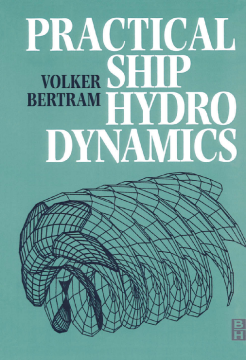
Additional Information
Book Details
Abstract
The author has provided the reader with comprehensive coverage of ship hydrodynamics with a focus on numerical methods now in use. The book provides a global overview of experimental and numerical methods for ship resistance and propulsion, manoeuvring and seakeeping. As boundary element techniques are now in standard use, these are covered in sufficient detail for independent code development.
The book is divided into seven chapters. Chapter one contains an overview of problems and approaches, including the basics of model and full scale testing. An introduction to computational fluid dynamics is given, including a discussion of applications. The next four chapters cover the subjects: propellers, resistance and propulsion, seakeeping and manoeuvring. These chapters present basic methods, such as model testing, extrapolation to full scale, and procedures for design. Substantial parts of each chapter include numerical methods and their applications. The last two chapters are devoted to boundary element methods for resistance and seakeeping.
· Web-supported text. Questions provided in chapters with answers on the web
· Covers well-established methods as well as the newest numerical procedures in the area of ship hydrodynamics
"To the experienced naval architect the comprehensive descriptions of the numerical methods will provide a unique opportunity of updating his knowledge in this special field... The author, as well as those interested in the latest developments in ship hydrodynamics, whether practising naval architects, university professors or students, should be congratulated with the publication of this book."
HANSA journal, October 2000
"Highly useful for graduate and post-graduate students, the book is also a professional reference work for naval architects and consulting engineers." Maritime Journal
"The author should be congratulated with the publication of this book... it will be studied with interest by professionals and students all over the world."
Poul Anderson, Technical University of Denmark
"The book covers quite a lot of ground...should prove very useful to senior students and to practitioners in naval architecture. The book is well presented and will prove very interesting and useful to those involved in these fields of naval architecture." The Naval Architect, Jan 2001
